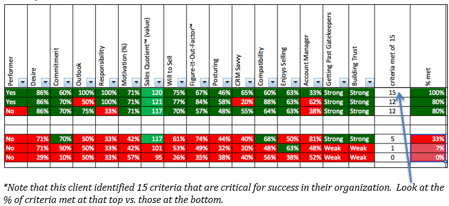Perfect practice prevents poor performance! To improve your overall sales effectiveness, you must become masterful at the skills required to be successful.
In today's blog post, you will learn why perception and consistency are critical factors when it comes to upgrading your selling results.

I’d like to blame my actual visual perception on my crappy golf game but the real problem is my consistency in practice. I’m not consistent. Therefore, my consistency on the golf course is non-existent, which leads to scores anywhere between 92 and 102.
I can shoot a 44 on the front and a 54 on the back. Don’t get me wrong being virtually blind in one eye doesn’t help with depth perception, which sucks when you are trying to figure out how far the pin is from your ball. Yes, I have a device on my phone that tells me the distance, but I assure you it doesn’t help. And it makes for some good laughs when I’m trying to light candles on a birthday cake. Just ask my daughter Alex.
Let’s talk about these two contributing factors and how they impact sales performance.
Perception
It has been my observation for over the last 25 years that salespeople tend to lump all sales calls into product categories:
- If you are a lender, most all of your sales calls start with you talking to someone to figure out if they need a loan or how you can help them have access to capital.
- If you are in employee benefits solutions, you approach all of your calls with the intent on how to help them get better coverage and better pricing.
- If you are a property and casualty agent, you focus your attention on risk vulnerabilities, risk assessments, and price.
- And finally, if you are an investment advisor, you tend to focus on where people can put money to generate a great return, minimize taxes, or reduce the risk of losing money.
All of these scenarios occur because of our perception of what the client wants or needs. The perception exists for one of two reasons:
- Our years and experience in the business
- The words the prospect used when we set up the initial call
There are two problems here:
- Years of experience have nothing to do with the current condition. Let’s go back to golf for a minute. One of the things that make the game so interesting, great and frustrating is that you never really play the SAME course twice. The weather conditions are different. The conditions in the fairway are different. The roll of the ball on the green can be different. And the pin placement always requires a different approach to your putt.
- What the prospect tells you initially is never the truth. Not that they are lying to you but they are not telling you the real problem. They normally describe a symptom to the problem or ask you to solve a problem that is actually caused by a bigger problem.
If we close our eyes and don’t count on what we hear, then we would have to expand our thinking, which will change our perception of the problem we need to solve.
Consistency
In the elite and strong categories, we know that 80% of the top 25% of all salespeople follow a consistent sales process. What does this mean?
- They have a process that is milestone-centric - it’s systematic in that when the steps are followed they lead to a conclusion of getting a decision thus eliminating think it overs and delays
- They document the process and what happens at each step so they know if they are on the right track and if they need to go back and uncover information they may have missed
- They can look at data to determine what choke points they may have that are keeping them from generating more sales, more quickly at higher margins
- They can use the data to model success and repeat the process over and over again
Again, very much like a good golfer. During practice, or while on the course during a match, really good golfers have a systematic approach to their game. They approach the ball the same way on the tee. They position their hands the same way when attempting a bunker shot. They line up consistently when making a putt. Those that are consistent in their approach to golf will be more consistent in their scoring and will more than likely have lower scores than someone like me.
The reality is I would like to be better at golf, but I lack commitment. I’m not willing, at this time, to do everything possible to succeed at a higher level. The same might be said of your approach to selling. If you are not selling more, more quickly, at better margins, it might just be a commitment problem rather than a perception or consistency problem.
.jpg?width=792&name=Certificate_Tony%20Cole%20(002).jpg)













